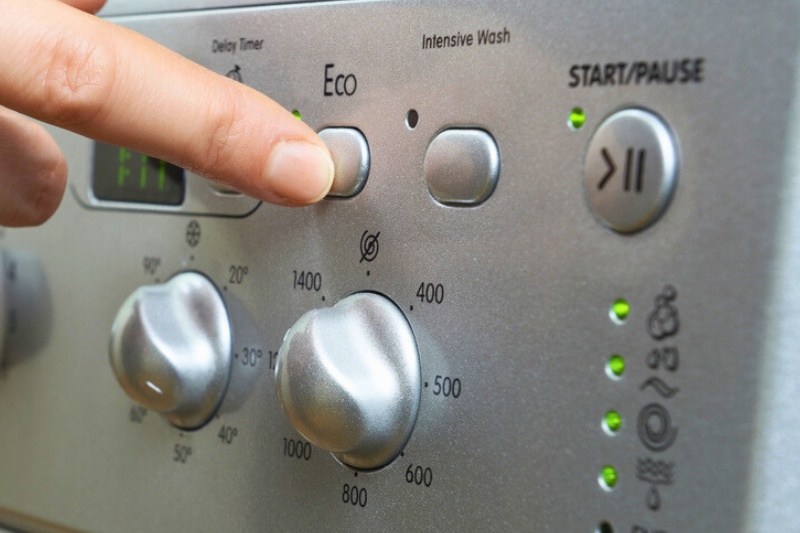Have you got a random light flashing on your washing machine? Don’t panic. There’s a reason why the light is flashing, and it just means that your appliance has detected a problem and is trying to tell you about it!
Let’s look at this in more detail below.
What Causes Washing Machine Lights to Flash?
When the lights on a washing machine start flashing, it typically means there’s an issue with the appliance, and it’s trying to tell you what’s wrong.
The causes and solutions for flashing lights on a washing machine can vary from one brand to another.
Here are the most common flashing warning lights to look out for:
Cause 1: Door problems
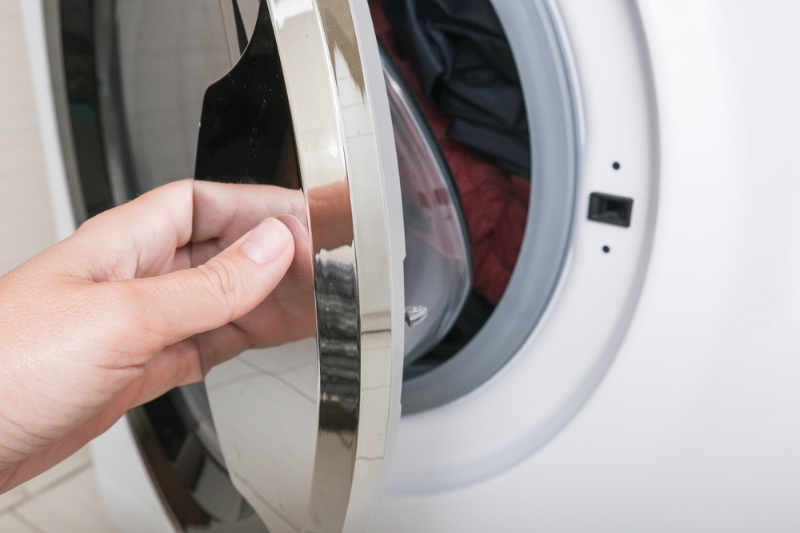
A faulty door lock can cause flashing lights on a washing machine. There are two main reasons why a door won’t close effectively: first, there’s an obstruction in the way, and second, the locking mechanism has broken.
Solution
If there is an obstruction, say a rogue sock or a jumper’s sleeve is hanging out of the drum, remove it and close the door. You can then start a cycle.
This is a really quick fix and the machine should function effectively afterwards.
If there is an issue with the locking mechanism, the washing machine won’t receive a signal from the lock to start a cycle. This is a safety feature. It is possible to replace some door locks, but this isn’t necessarily easy work, so it might be best to call an engineer.
Cause 2: Water supply problems
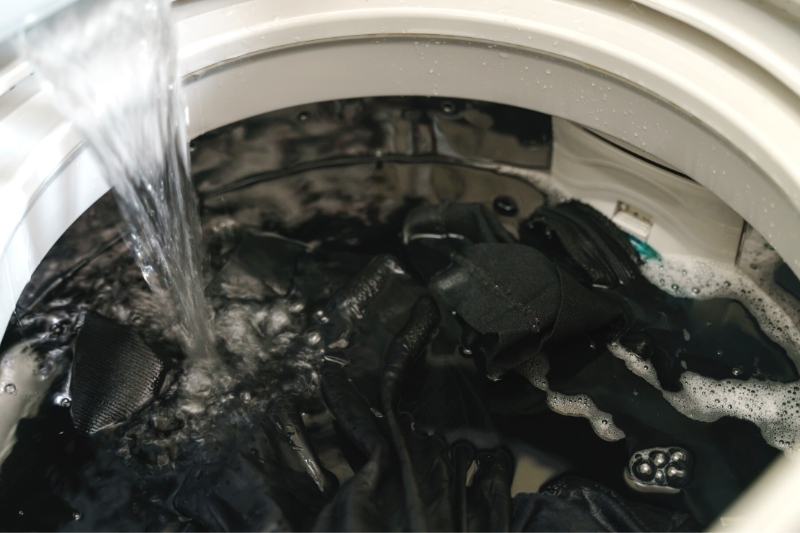
If there is a problem with the water supply going to the machine, a warning light will flash up on the washing machine.
For example, the valve might’ve shut so no water can get into the machine, or there’s a kink in the hose taking water to the washer.
In these cases, a light will come on to signal to you there’s something wrong with the water going into the appliance, so it can’t run a cycle.
Solution
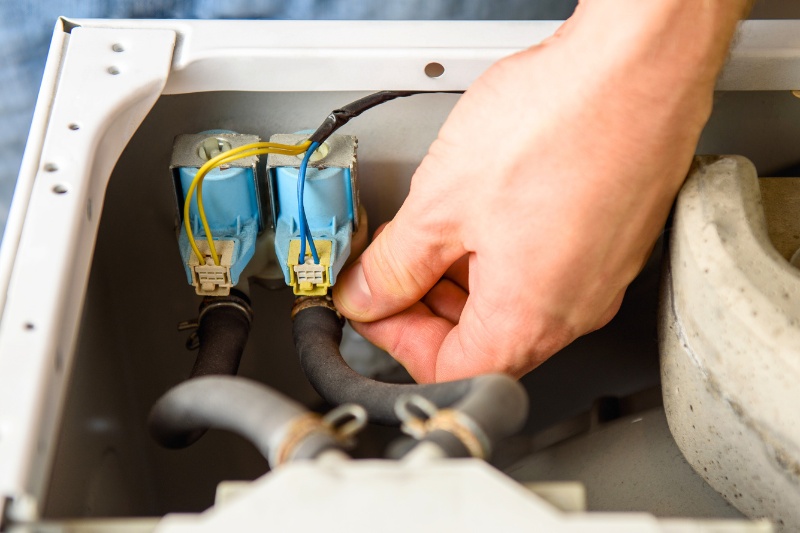
Ensure there is water going into your washing machine – open the valve. In addition, make sure there’s ample water pressure going to the machine, and there are no bends or kinks in the water pipe.
If specific plumbing problems are at play, you will need to call a plumber out to assess the issue and fix it.
Cause 3: Drainage issues
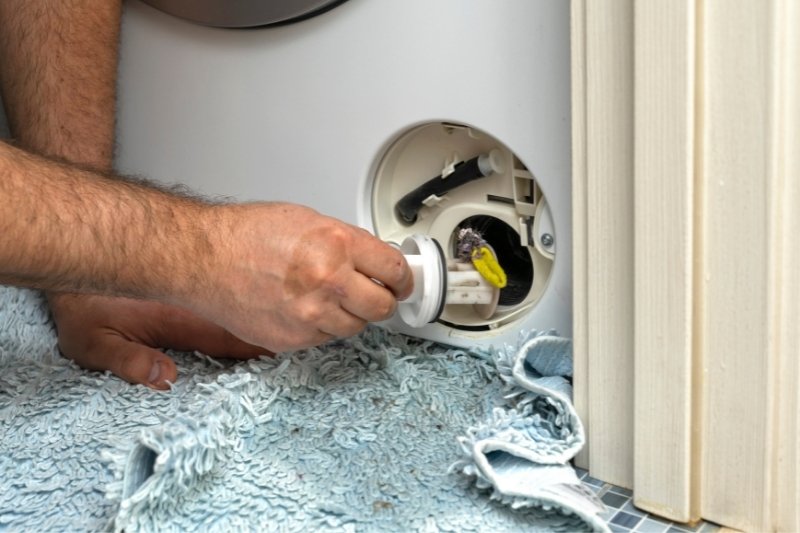
If your washing machine stops mid-cycle and has trouble draining water, this can cause a light to flash on the control panel.
A blocked or bent hose is usually the main culprit, but a clogged filter or faulty pump can also be to blame.
Solution
You must manually drain the water from the machine (see your user handbook on removing water from the washer). When the machine is free of water, you can turn the power off and check the machine for blockages.
The first place you want to look is the drain hose. Have a look for any kind of obstruction. This can be anything, for example, chunks of fluff, coins or a sock! While you’re there, straighten out the hose and ensure there are no bends in it.
Then, remove and clean out the filter. The filter can be backed up with similar items. From experience, I’ve had a number of Colour Catchers get caught in the filter, which has stopped the washing machine from draining effectively.
So, a tip for you all: Remove the Colour Catcher from the drum after the wash. And if you can’t find the dye-catching trap, hunt it down – you really don’t want it to get stuck in places it shouldn’t!
If you believe that the pump is at fault, it’s best to call an engineer out to inspect the problem. It’s likely that you’ll need to replace the part if it is broken, and it’s a good idea to get a professional to do it.
Cause 4: Imbalanced load

Many washing machines in the UK come equipped with fancy tech that can detect how balanced your washing loads are.
Sometimes, if you add a big and heavy item to your washing machine’s drum, say a duvet, a light will flash on the control panel.
The warning light is trying to tell you that the item you’ve added to the machine, in this case a duvet, is too heavy and the machine won’t be able to spin properly with the item inside.
In addition, the light indicates that you might have to arrange the clothes inside your drum to ensure the load is evenly distributed.
A consequence of having an even load in the drum is that the washing machine won’t vibrate too much, and the laundry will be cleaned effectively.
Solution
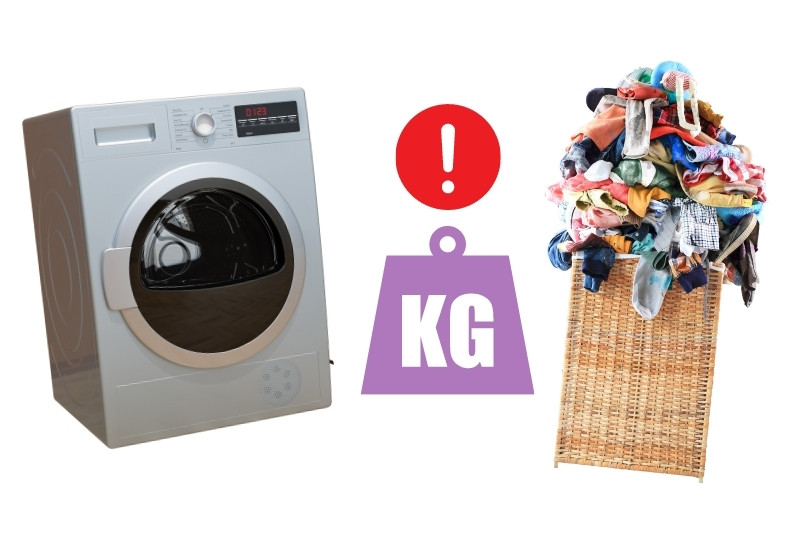
Double-check what capacity your washing machine can hold and only add an appropriate amount of laundry to the drum.
For example, if you have a 9 kg washing machine, don’t stick 12 kg of clothes in the drum. This will put needless strain on the appliance, and the warning light will flash!
If you don’t know how much washing you can add to your drum, weigh it out. A simple way to do this is to weigh yourself, then weigh yourself again holding the clothes.
The difference between the two weights is the weight of your washing. From this point, you can add or take away a few garments to even the load out.
In addition, if you have to wash bulky items, the type of stuff that will strain your household washer, use a launderette service instead. They have bigger machines that can handle more cumbersome loads. Plus, you won’t ruin your washing machine in the process.
Cause 5: Overloading or underloading problems
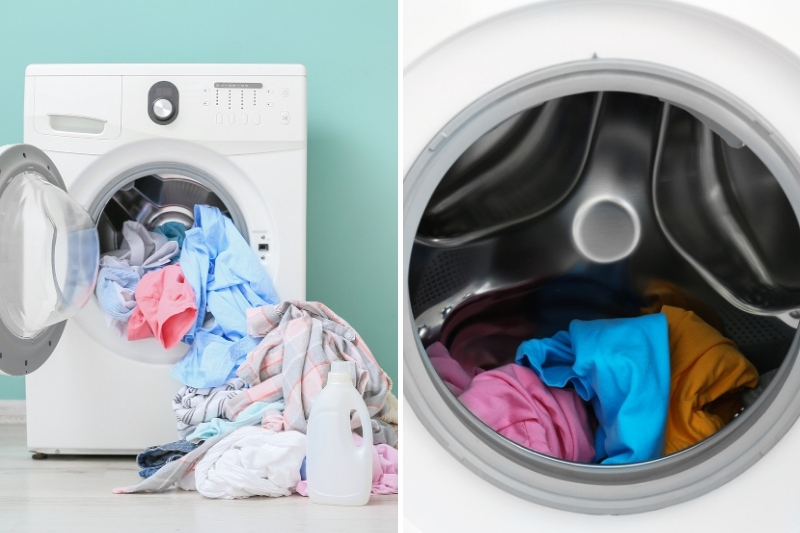
A flashing light can indicate that you haven’t filled your washer up effectively. For example, you might not have added enough laundry to the drum, or you’ve added too much washing to the machine. The flashing light is trying to tell you that the machine can’t function effectively.
Solution
Always check the capacity guide on your washing machine and add an appropriate amount of laundry to the drum.
You can find out more information in your user handbook on how much washing you can clean in the machine at once – stick to the figures you’re given.
If you don’t use your machine effectively, you will put needless strain on the various components inside, and the appliance could start to fail from an early age.
Cause 6: Electrical issues
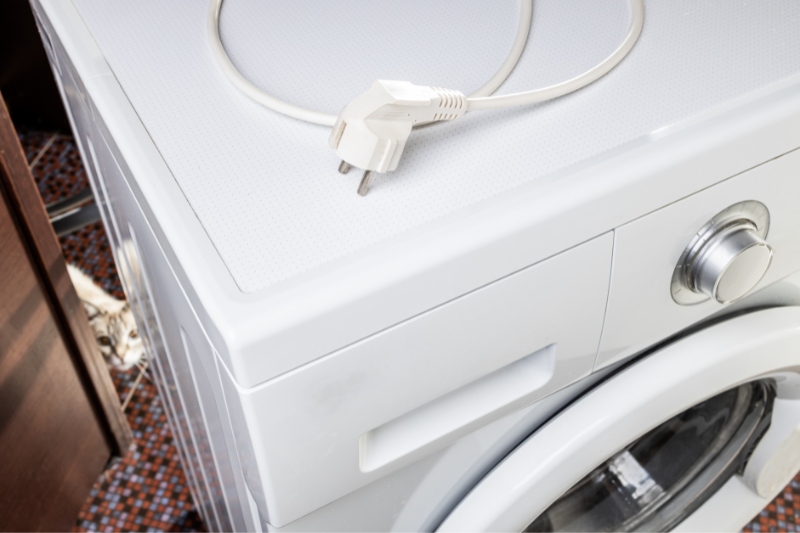
Occasionally, a flashing light could signal that there’s some sort of electrical problem with the washing machine. This could be a simple issue like a loose connection.
Further to this, if the lights on the machine are flashing erratically and without reason, this could signal that the control panel is malfunctioning.
Solution
Try to locate the problem by doing some basic checks. Look at the electricity supply, check the plug socket, check if the switch is on, check if there is power in the area, and check for loose wires.
If you can sort the problem out yourself, for example, by switching the plug on, do so.
However, call an engineer out for more complex issues, like a malfunctioning control panel.
Cause 7: Overheating

If a washing machine has been overworked, it may overheat. Consequently, lights will flash on the control panel to indicate that the machine is overly warm and that parts inside, like the motor, need a break.
In addition, a washing machine might overheat because of a faulty thermostat or a failing motor.
Solution
Allow the machine time to cool down. You can then try to use your machine again, but don’t run an overly long cycle; try something simple.
If the problem persists, call an engineer out to assess the problem. The engineer may have to replace a damaged or malfunctioning thermostat, for example.
Cause 8: Error codes
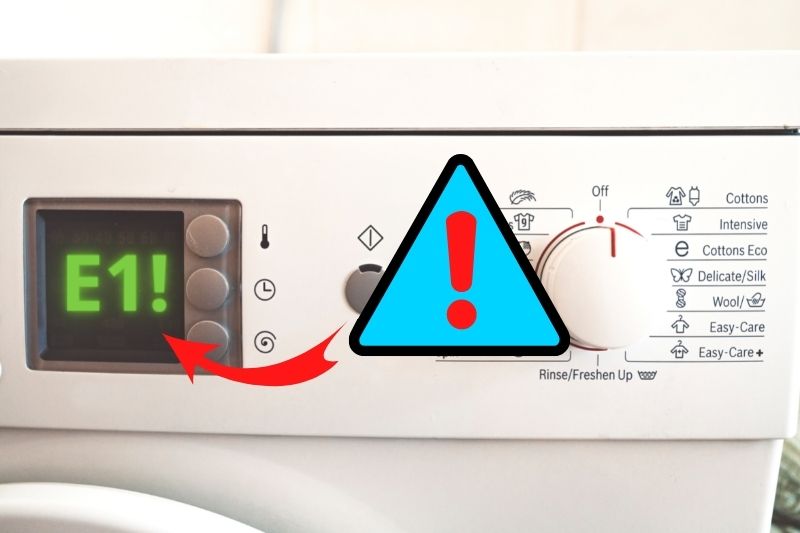
In addition to flashing lights, you might see a code or series of numbers popping up on the washing machine’s display screen.
The code will either remain stationary on the screen or move across it in a carousel-type way to grab your attention.
Most modern washing machines in the UK display error codes on their screens when there is a problem with the appliance.
These error codes are made up of a letter and a number, and it’s your job as the user to check your user manual to see what the code means.
Error codes are helpful because the machine will tell you what’s wrong with it, and you can find a solution to the problem relatively quickly by reading the user handbook.
Essentially, you (or an engineer) don’t have to go rooting around in the appliance to try and diagnose the problem – it’s a non-invasive approach.
In general, the codes are unique to each brand of machine, so always check your user manual to see what a specific code means. For example, Beko’s codes will differ from those of Samsung’s.
Problems that will likely flag up under an error code include but are not limited to water supply problems, drainage problems, temperature concerns and unbalanced loads.
Solution
Read your user manual to figure out what the error code means and solve the problem by following the steps in the handbook. Sometimes, you will have to call an engineer out to fix an issue.
General Troubleshooting

Quick and easy ways to solve your flashing light problem:
- Look at the washing machine’s control panel and take note of what symbol/writing/code is next to the flashing light.
- Check the user manual (make sure you read the manual specific to your washing machine) and match the light’s symbol/wording to what it says in the book.
- Follow the instructions in the book to handle the problem. If you can’t find your user handbook, download a copy from the manufacturer’s website.
- Contact an engineer and get them to come and look at the machine.
Keep in mind that while some fixes are simple, others are more complex and require the skills of a professional with experience in fixing washing machines.
Sometimes, you can do more harm than good trying to fix a problem, so call a professional out if in doubt!
What Causes the Washing Machine Lock Symbol to Flash?
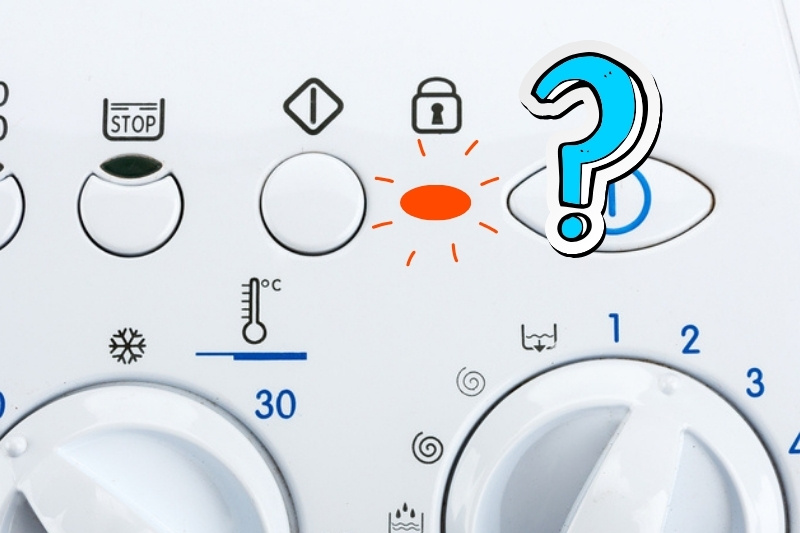
If the lock symbol on your washing machine’s control panel is flashing, the appliance is trying to tell you there’s an issue with the door’s locking mechanism.
To fix this problem, first, ensure there are no obstructions in the door and that it is shut correctly. You can then restart the cycle.
If this doesn’t work, assume that the lock has broken. If the lock on the door fails, the machine won’t start a cycle as a safety precaution. In this case, you will likely have to replace the lock. This can be tricky work, so it would be worth asking a professional for advice.

Bethan has a passion for exploring, reading, cooking and gardening! When she’s not creating culinary delights for her family, she’s concocting potions to keep her house clean!
